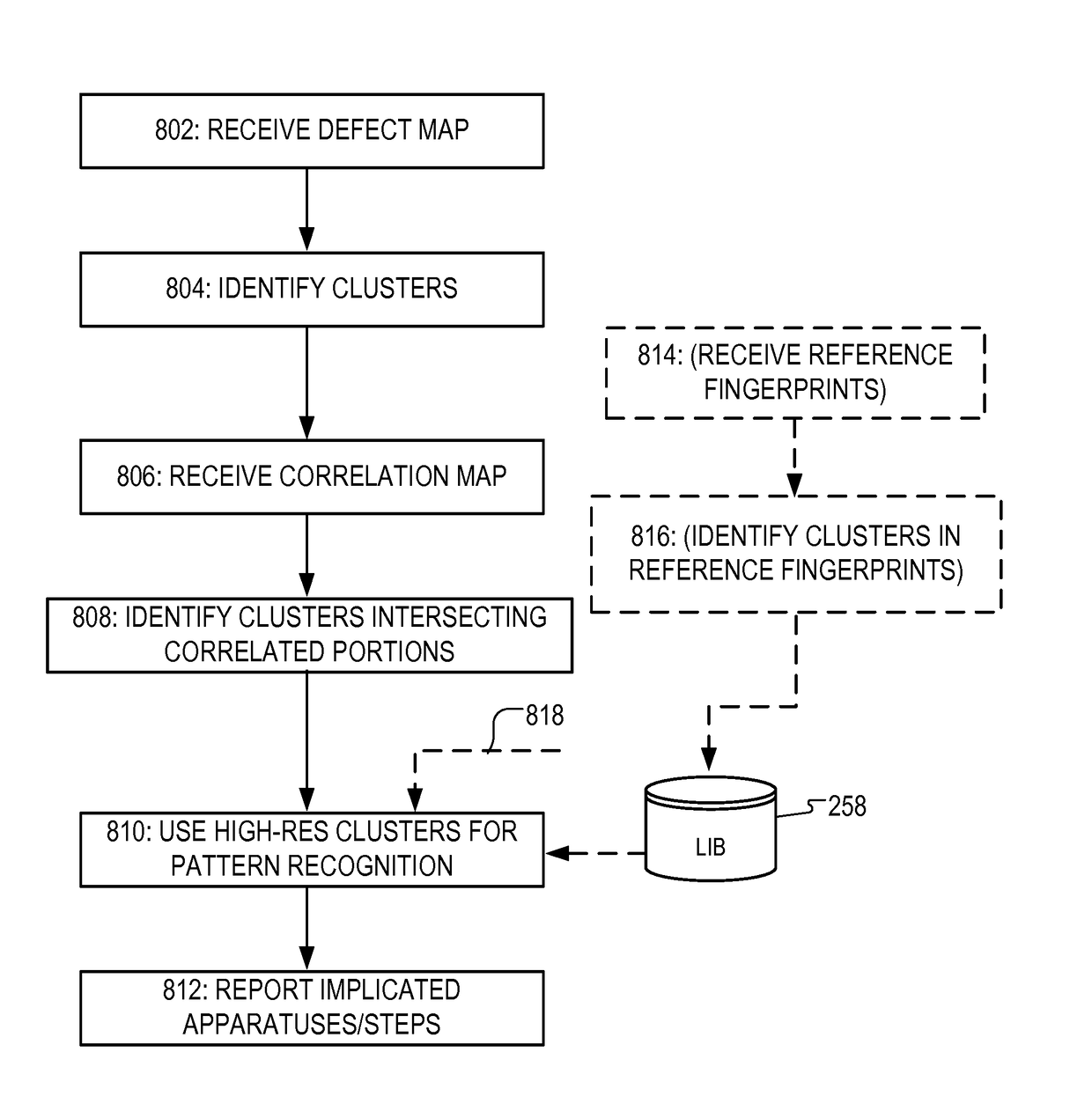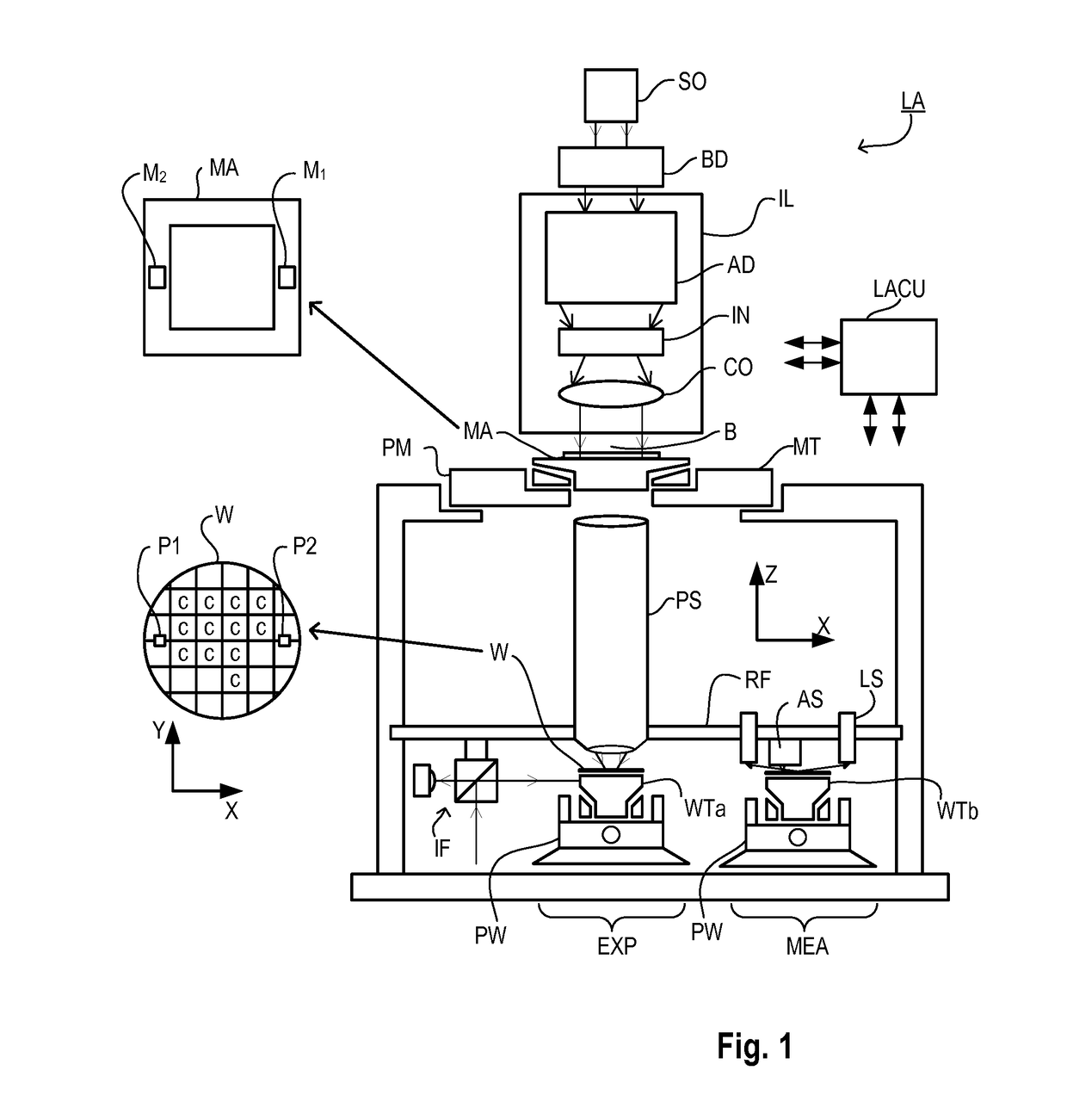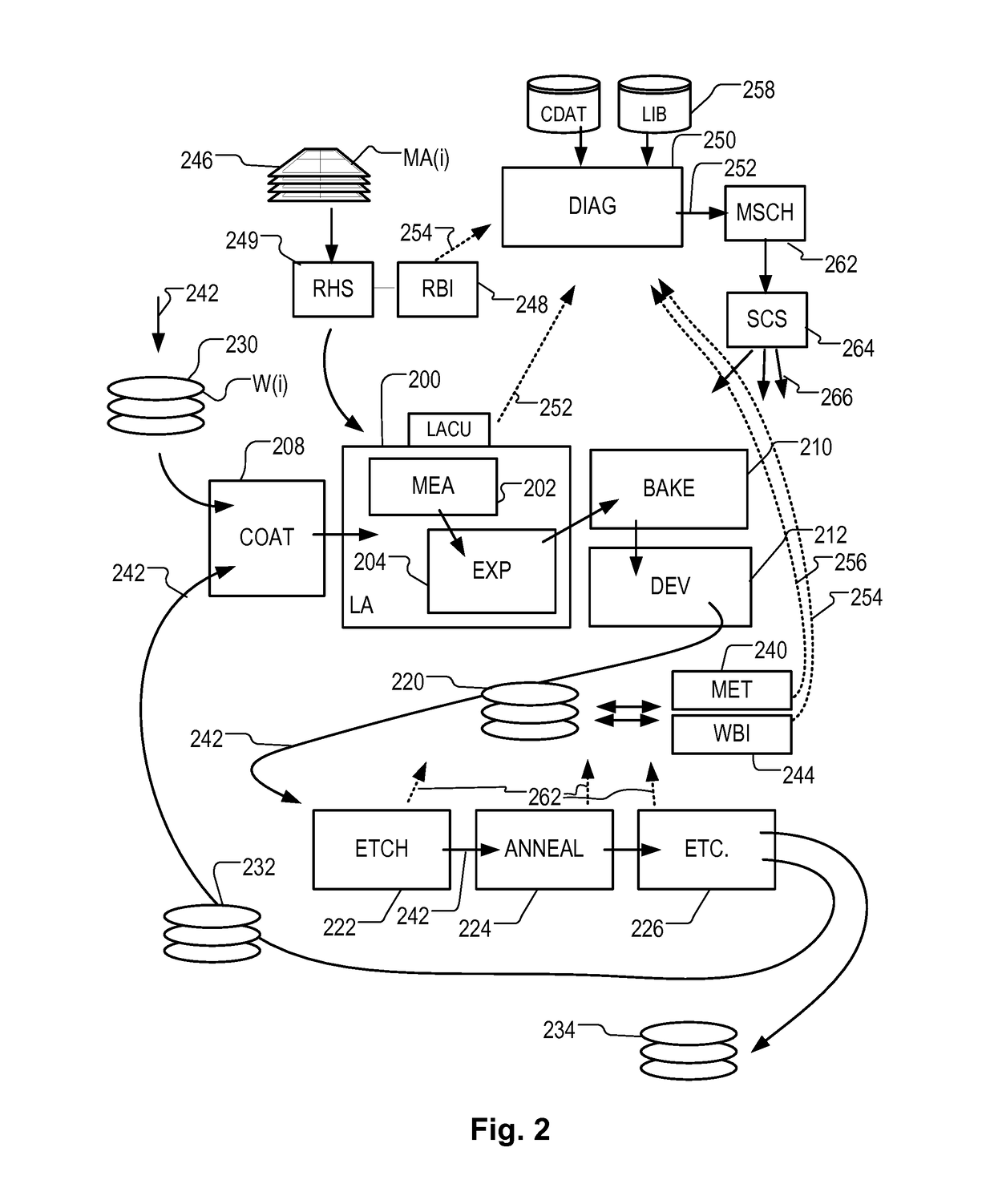Method & apparatus for obtaining diagnostic information relating to a lithographic manufacturing process, lithographic processing system including diagnostic apparatus
a technology of lithographic manufacturing process and diagnostic equipment, applied in the direction of electrical equipment, instruments, material analysis, etc., can solve the problems of affecting the processing of other substrates in due time, the performance of subsequent processing steps, and the material of the substrate, so as to achieve the effect of automaticly obtaining diagnostic information much faster, maximizing yield and productivity, and better planning of maintenance operations
- Summary
- Abstract
- Description
- Claims
- Application Information
AI Technical Summary
Benefits of technology
Problems solved by technology
Method used
Image
Examples
Embodiment Construction
[0044]Before describing the techniques that are the specific subject of the present disclosure, it will be useful to present some background information on lithographic manufacturing processes and the issues arising therein. The examples will concern primarily processes for the production of functional devices on semiconductor substrates. The same principles can be applied to other types of product or substrates. It should also be appreciated in particular that the same principles can be applied in the manufacture of patterning devices such as reticles, which may themselves be used in a subsequent manufacturing process. Accordingly, references to the substrate in what follows may be construed also as references to a substrate on which a master pattern is to be formed, this being used subsequently for the applying functional device patterns to a series of substrates.
[0045]The patterning device can be an optical lithography reticle, either transmissive or reflective in type. The patte...
PUM
| Property | Measurement | Unit |
|---|---|---|
| defect size | aaaaa | aaaaa |
| clamping pressures | aaaaa | aaaaa |
| wavelength | aaaaa | aaaaa |
Abstract
Description
Claims
Application Information
 Login to View More
Login to View More - R&D
- Intellectual Property
- Life Sciences
- Materials
- Tech Scout
- Unparalleled Data Quality
- Higher Quality Content
- 60% Fewer Hallucinations
Browse by: Latest US Patents, China's latest patents, Technical Efficacy Thesaurus, Application Domain, Technology Topic, Popular Technical Reports.
© 2025 PatSnap. All rights reserved.Legal|Privacy policy|Modern Slavery Act Transparency Statement|Sitemap|About US| Contact US: help@patsnap.com



